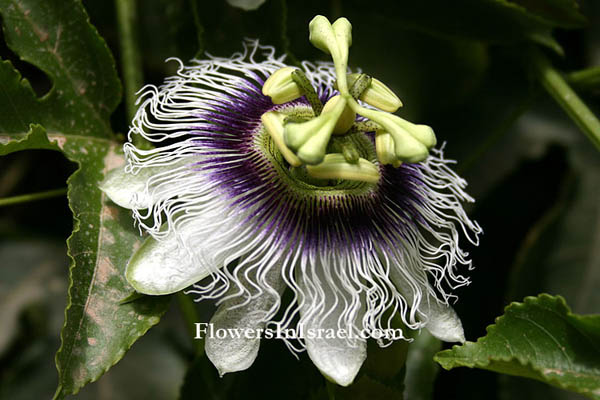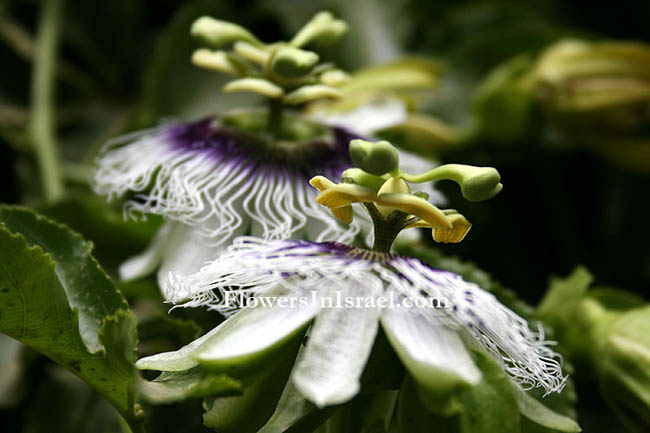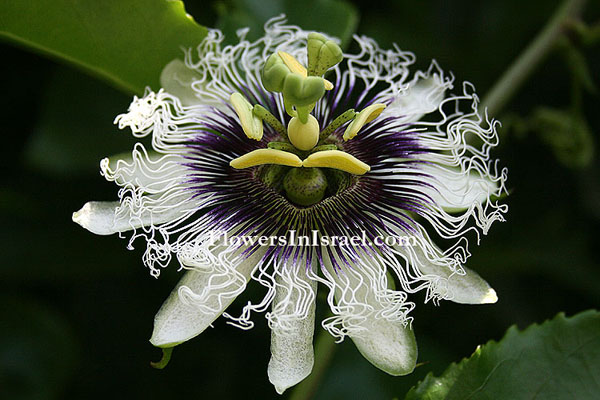Hebrew: שעונית נאכלת, Arabic: فاكهة زهرة الآلام
| Scientific name: | Passiflora edulis Sims | |
| Common name: | Passion flower | |
| Hebrew name: | שעונית נאכלת | |
| Arabic name: | فاكهة زهرة الآلام | |
| Family: | Passifloraceae, Passion flower family, שעוניתיים |

|
| Life form: | Climbing vine; perennial | |
| Stems: | Woody, climbing by means of tendrils; young stems and tendrils, tinged with red or purple | |
| Leaves: | Alternate, deeply 3-lobed, finely dentate | |
| Inflorescence: | Inflorescence cymose, axillary, sessile or pedunculate, primary axis often a tendril, secondary axis often reduced | |
| Flowers: | 5 greenish-white sepals, 5 white petals and a fringelike corona of straight, white-tipped rays, rich purple at the base and 5 stamens with large anthers, the ovary and triple-branched style forming a prominent central structure | |
| Fruits: | Round to oval, yellow or dark purple at maturity, with a soft to firm, juicy interior filled with numerous seeds | |
| Origin: | From southern Brazil through Paraguay to northern Argentina |

Derivation of the botanical name: Passiflora, Latin, passio, passion; flos, a flower; the name was given by missionaries in South America, who thought they saw in the parts of the flower various aspects of the Passion of Jesus prior to his crucifixion: Its coronal threads were seen as a symbol for the crown of thorns, the curling tendrils for the cords of the whips, the five stamens for the wounds, the three stigmas for the nails on the cross, the ovary for the hammer, and the five petals and five sepals of the flower for the ten “true” apostles (omitting Peter who denied and Judas who betrayed). edulis, edible. The Hebrew name: שעונית, shaonit (watch), like a panel of a watch.

|